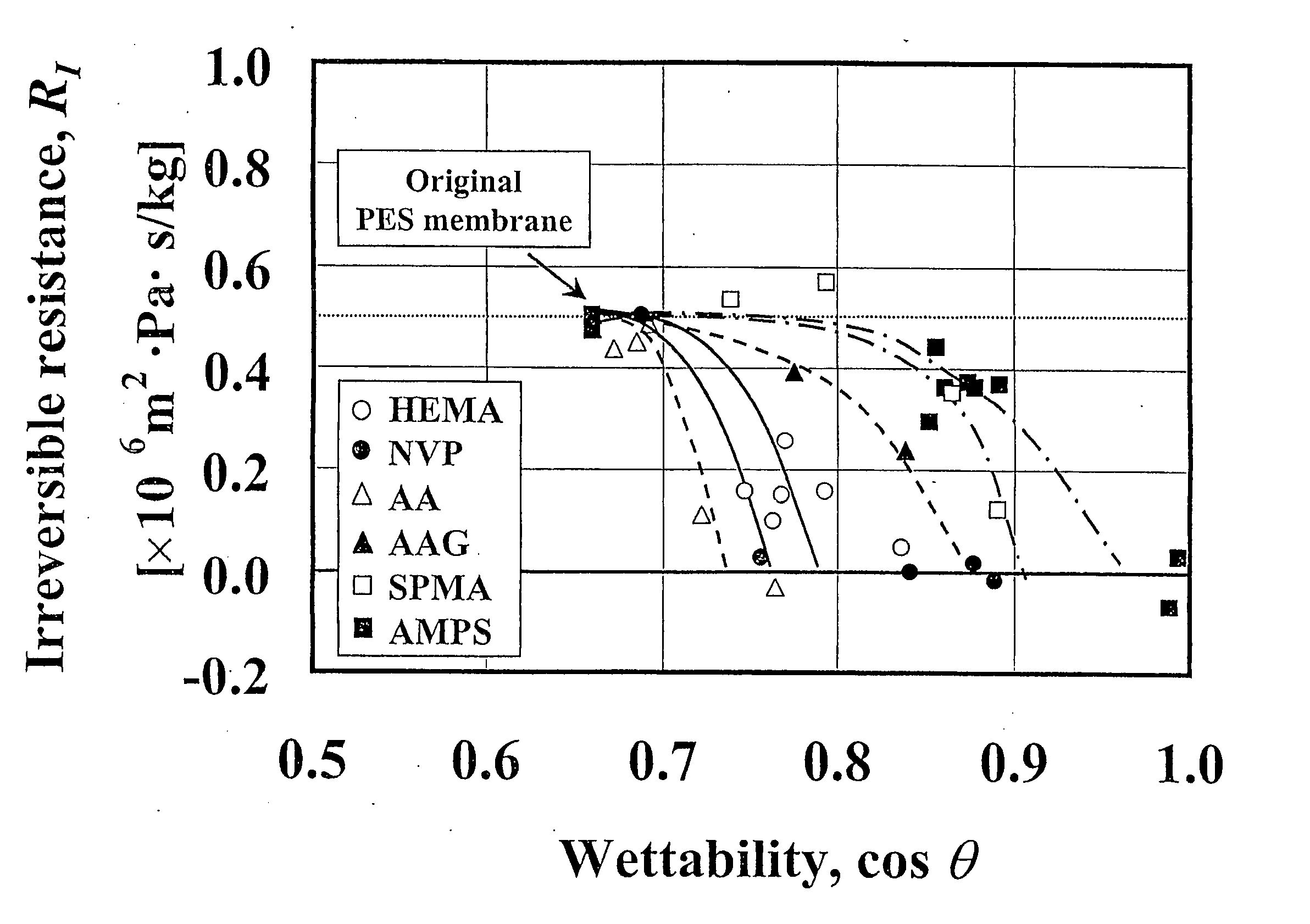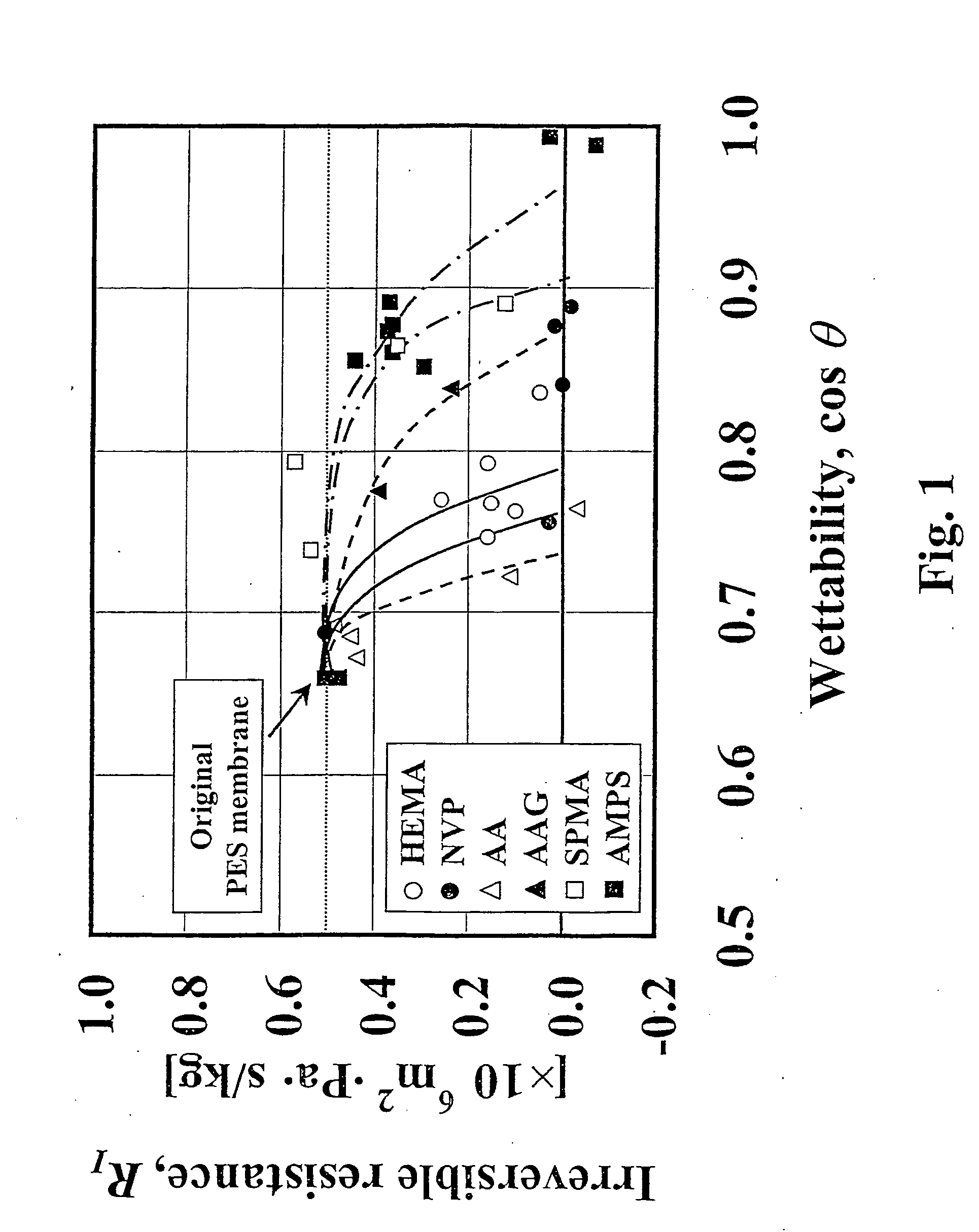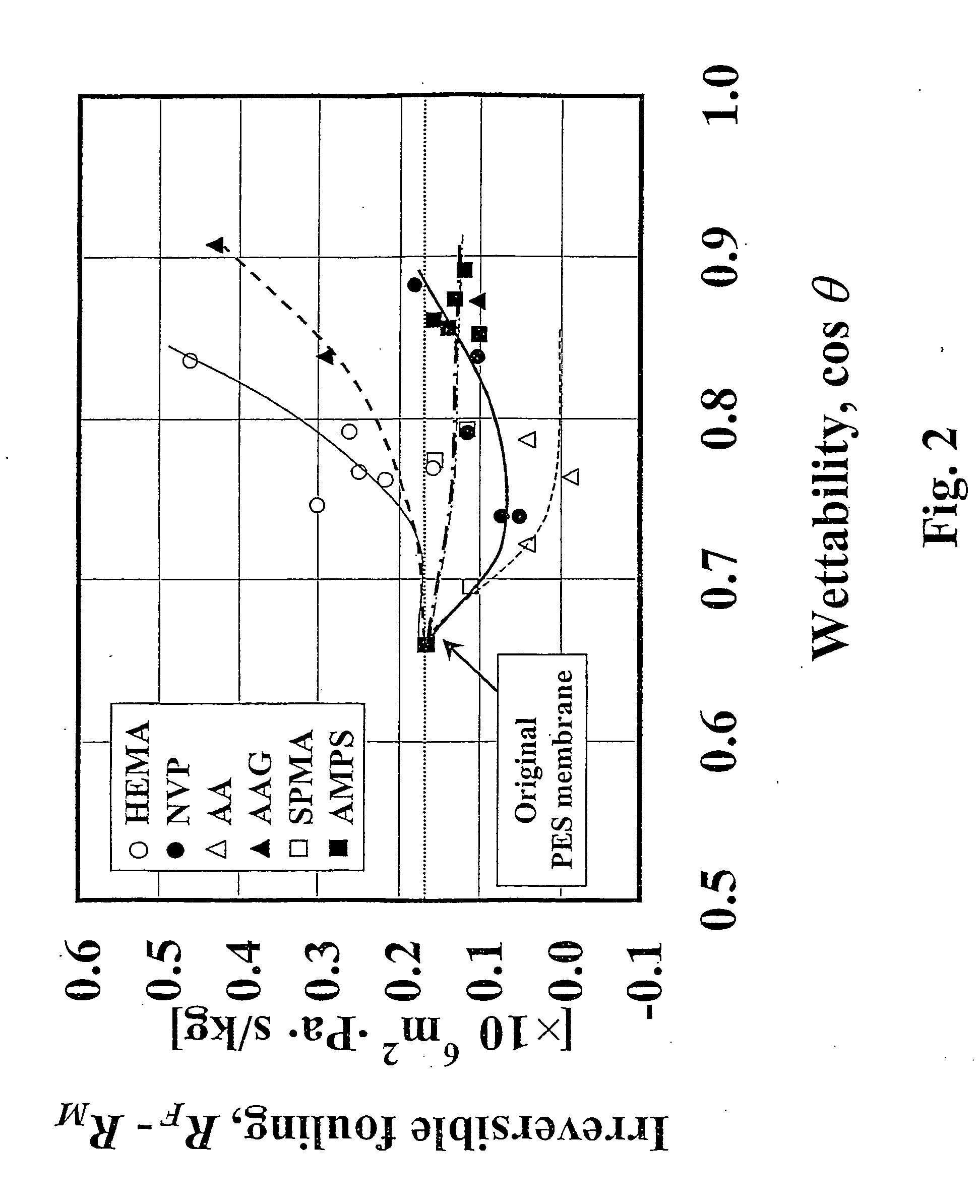Photo-processing and cleaning of pes and psf membranes
a technology of photo-processing and psf membrane, applied in the field of ultra-micro-filtration membrane, can solve the problems of no comparison, no teaching how to use aa monomers, and no guidance on how to achieve the effect of reducing protein fouling, and reducing the size of the original membran
- Summary
- Abstract
- Description
- Claims
- Application Information
AI Technical Summary
Benefits of technology
Problems solved by technology
Method used
Image
Examples
Embodiment Construction
[0070] The drawings illustrate and demonstrate various aspects of the present invention.
Selection of Appropriate Monomers:
[0071] Referring to FIGS. 1 to 5; many monomers have been evaluated to reduce fouling during protein filtration in the past. Efficacy in reducing fouling, ability to graft (graft sensitivity), efficiency of grafting, homopolymer formation, absoptivity of light and optical filterability, are all characteristics that effect monomer efficacy in reducing fouling. The main goal is to choose a monomer that wets the PES membrane more effectively than other monomers during the photo-graft induced polymerization, and that does not cause a significant change in solute retention or a large change in permeation volume flux.
[0072] The present inventors have found that AA (acrylic acid), a weak acid monomer, is an extremely good and perhaps the best monomer for use with photo-induced graft polymerization of PES (PES-g-AA) in reducing fouling of proteins and NOM. As a resul...
PUM
| Property | Measurement | Unit |
|---|---|---|
| RI | aaaaa | aaaaa |
| RI | aaaaa | aaaaa |
| molecular weight cut | aaaaa | aaaaa |
Abstract
Description
Claims
Application Information
 Login to View More
Login to View More - R&D
- Intellectual Property
- Life Sciences
- Materials
- Tech Scout
- Unparalleled Data Quality
- Higher Quality Content
- 60% Fewer Hallucinations
Browse by: Latest US Patents, China's latest patents, Technical Efficacy Thesaurus, Application Domain, Technology Topic, Popular Technical Reports.
© 2025 PatSnap. All rights reserved.Legal|Privacy policy|Modern Slavery Act Transparency Statement|Sitemap|About US| Contact US: help@patsnap.com



